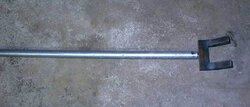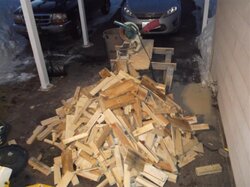Hey guys, so I am going to be heading out to cut up a ton of fallen ash in the next week or so, but I'm guessing it is not going to be seasoned and ready to burn for this winter.
Right down the road from where I live there is a feed mill that goes through about 2 dozen pallets a week. As far as I know they just take them to the dump.
What are your thoughts on me picking up a dozen pallets or so each week, sawing them up, and using them for fuel this winter? Does anyone have experience burning pallets, or is it a waste of time?
I had thought I might buy some seasoned wood off of Craigslist this year, but I've never done it before and I thought this might be a good alternative to keep my thriftiness meter high.
Thanks as always for any input!
Right down the road from where I live there is a feed mill that goes through about 2 dozen pallets a week. As far as I know they just take them to the dump.
What are your thoughts on me picking up a dozen pallets or so each week, sawing them up, and using them for fuel this winter? Does anyone have experience burning pallets, or is it a waste of time?
I had thought I might buy some seasoned wood off of Craigslist this year, but I've never done it before and I thought this might be a good alternative to keep my thriftiness meter high.
Thanks as always for any input!
Last edited:




